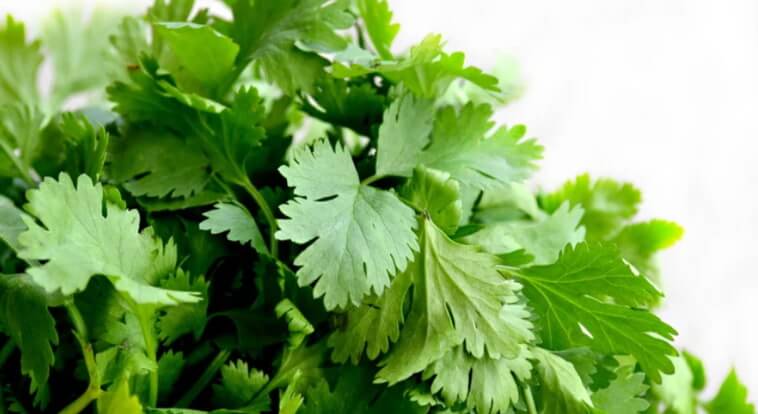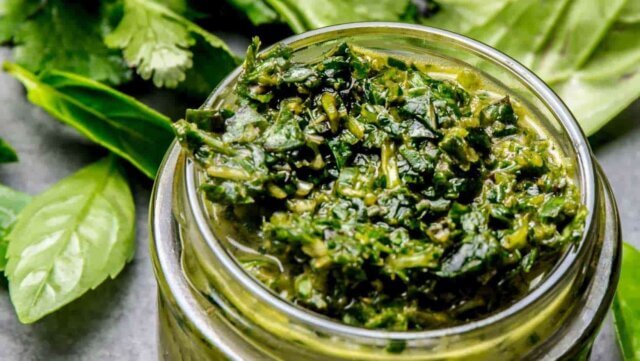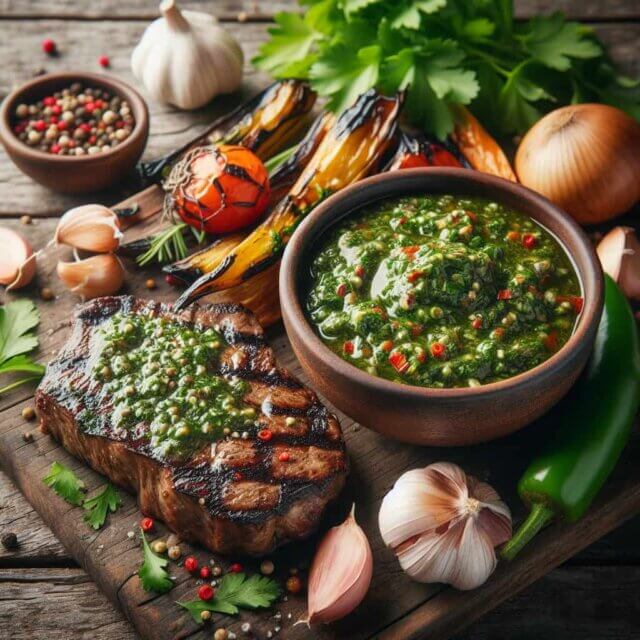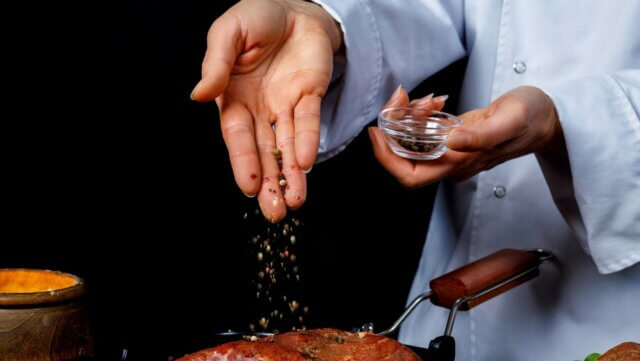Today I want to share with you another very popular Argentine sauce: salsa criolla. This is a vibrant and tangy salsamade from tomatoes, onions, bell peppers, and vinegar. Preparing it is as easy as it’s delicious!
Would you like to taste it with your favorite Argentine asado? Here I’m sharing with you all the secrets of the perfect salsa criolla for your grilled meat.
Born from a melting pot of influences—spanning from indigenous peoples to European ones—Salsa Criolla has deep roots in the cultural heritage of Argentina. Legend has it that Salsa Criolla is a combination of Spanish and Italian immigrants who settled in Argentina in the late 19th and early 20th centuries.
Drawing inspiration from their own culinary traditions, these pioneers put their own spin on local ingredients, creating a sauce that serves as the perfect complement to Argentine asado (similar to what happens with chimichurri). Today, you’ll find places like Salta where salsa criolla is even served with empanadas or as a topping for sandwiches
Ready to roll up your sleeves and get to work? Here’s the best recipe for salsa criolla you’ll ever find:
2 large red onions, thinly sliced
2 ripe tomatoes, diced
1 bell pepper (red and green), thinly sliced
1/4 cup white vinegar
1/4 cup extra virgin olive oil
1/4 cup fresh parsley, chopped
Salt and pepper to taste
Begin by thinly slicing the red onions and bell peppers. I know it’s difficult when onions are making you weep 😂, but aim for uniformity in size!
Then, dice ripe, flavorful tomatoes for added sweetness. Roma tomatoes are a popular choice due to their firm texture and rich taste, but feel free to use any variety you prefer. Finally, chop the fresh parsley, discarding the stems and finely mincing the leaves to release their aromatic oils.
In a large mixing bowl, combine the ingredients (except for parsley) and then pour the vinegar and extra virgin olive oil over the mixture. Before adding the chopped parsley, give it a quick rinse under cold water and pat it dry with paper towels to remove any dirt or grit.
Don’t be afraid to get creative with your salsa criolla! In addition to traditional spices like dried oregano or red pepper flakes, you can create your recipe and add other herbs and spices such as fresh cilantro, minced garlic, or even a splash of lime juice.

Then, taste your Salsa Criolla and adjust the seasoning as needed. For example, if you feel it’s lacking in acidity, add a bit more vinegar.
Allow the salsa criolla to marinate for at least 30 minutes at room temperature so flavors can meld together. For even better taste, refrigerate it for a few hours or overnight.
Cover the bowl with plastic wrap or transfer the salsa criolla to an airtight container before refrigerating to prevent it from absorbing other odors in the fridge.
Once the salsa criolla has marinated to your liking, it’s ready to serve with your tira de asado or vacìo. Enjoy it as a condiment alongside grilled meats, poultry, or seafood. It also makes a delicious topping for sandwiches or salads!
You don’t need to eat all of your salsa criolla right away: in fact, you can store it for future asados and enjoy it later. Here are some tips to store your homemade salsa criolla so it doesn’t spoil!
Finally, did you know that different places in Argentina have their own version of salsa criolla? For example, in Buenos Aires you may find generous amounts of fresh cilantro in the mix, giving the sauce a bright kick.
Meanwhile, in Salta they tend to use local chilli peppers and serve this sauce alongside traditional empanadas or grilled chorizo. Why not try all of these versions of salsa criolla and see which one you like best with your meat or grilled burgers?
Are you looking forward to your weekly asado but find yourself not knowing which sauce to use for your choripan or your t-bone steak? Enter the classic chimichurri, the most well-known Argentine sauce and the perfect companion to grilled meats.
Made with fresh parsley, garlic, oregano, and a hint of chili pepper, chimichurri can be the perfect complement to your Argentine asado. And if you’re not sure how to prepare it, here’s a step-by-step guide to prepare the classic chimichurri recipe – the best you’ve ever tasted. Shall we?

Where does the eccentric name “chimichurri” come from? Its exact origins are somewhat debated, but it’s widely believed to have originated in Argentina, particularly among the gauchos who roamed the Argentine pampas during the 19th century.
Regarding its name, some people propose that it’s derived from the Basque word “tximitxurri,” meaning “a mixture of several things in no particular order,” which aptly describes the way this sauce is made.
Today, chimichurri’s popularity has spread far beyond the borders of Argentina and Uruguay, gaining recognition as a versatile condiment that pairs excellently with grilled meats, including beef, pork, chicken chorizo, and Patagonian lamb.
1 cup fresh parsley, finely chopped
4 cloves garlic, minced
1/4 cup white vinegar
1/2 cup extra-virgin olive oil
1 tablespoon dried oregano
1 teaspoon red pepper flakes (adjust to taste)
Salt and pepper to taste
Start by finely chopping the fresh parsley and mincing the garlic cloves, then put them into the same bowl. Even though it may be tempting to save time, avoid using dried parsley or garlic powder, as they won’t have the same taste.
Then, pour the white vinegar over the parsley and garlic mixture; its acidity will help balance the flavours and give the sauce its signature tang.
If it’s your first time tasting chimichurri, perhaps you’d like to make it with milder acidity and a slightly sweeter undertone. In that case, you can use apple cider vinegar. Others prefer to prepare this sauce with red wine vinegar, which makes it stronger.

Now, slowly drizzle the extra-virgin olive oil into the bowl, whisking continuously to emulsify the ingredients. You may find that some recipes opt for a blend of oils instead of just extra-virgin olive oil.
For example, sunflower oil is very popular in Argentine cuisine, with its neutral taste and high smoke point. When it comes to chimichurri, it can add a lighter texture and ensure the sauce maintains its green color.
Sprinkle the dried oregano and red pepper flakes (ají molido) over the mixture, then season with salt and pepper to taste while using a spoon or whisk to mix all the ingredients together.

If you’re looking to experiment, some spices can make your chimichurri a bit more unique:
It’s time to taste your chimichurri and fine-tune it to your taste. So, grab a spoon, put a bit of the sauce on a piece of bread and taste it!
Perhaps you find that the chimichurri could benefit from a touch more acidity, so you can add more vinegar. Or maybe you realize you put too much ají molido, which you can solve by adding more oil.
Time for the grand finale: cover the sauce and let it sit at room temperature for at least 30 minutes (don’t be tempted into using it right away!). Freshly prepared chimichurri can sometimes have sharp, intense flavors, particularly from the raw garlic and vinegar, that won’t be tasty.
Instead, allowing your chimichurri sauce to rest will significantly enhance its texture while balancing its taste. Some experts even suggest preparing chimichurri a few days in advance or even weeks before you plan to use it to maximize its development.
And that’s it. Chimichurri is a versatile sauce, suitable to complement not only grilled meats but also seafood. So, the next time you find yourself in Argentina, be sure to keep an eye out for freshly prepared chimichurri and explore what this iconic condiment has to offer.
Or maybe you’d like to experiment at home and expand your Argentine grilling repertoire with this step-by-step chimichurri recipe. Enjoy!
 What's in it for You Every Month on Saturday?
What's in it for You Every Month on Saturday? Special Bonus: Sign up now and get a FREE guide: "5 Secrets to Perfect Asado Every Time"
Special Bonus: Sign up now and get a FREE guide: "5 Secrets to Perfect Asado Every Time"